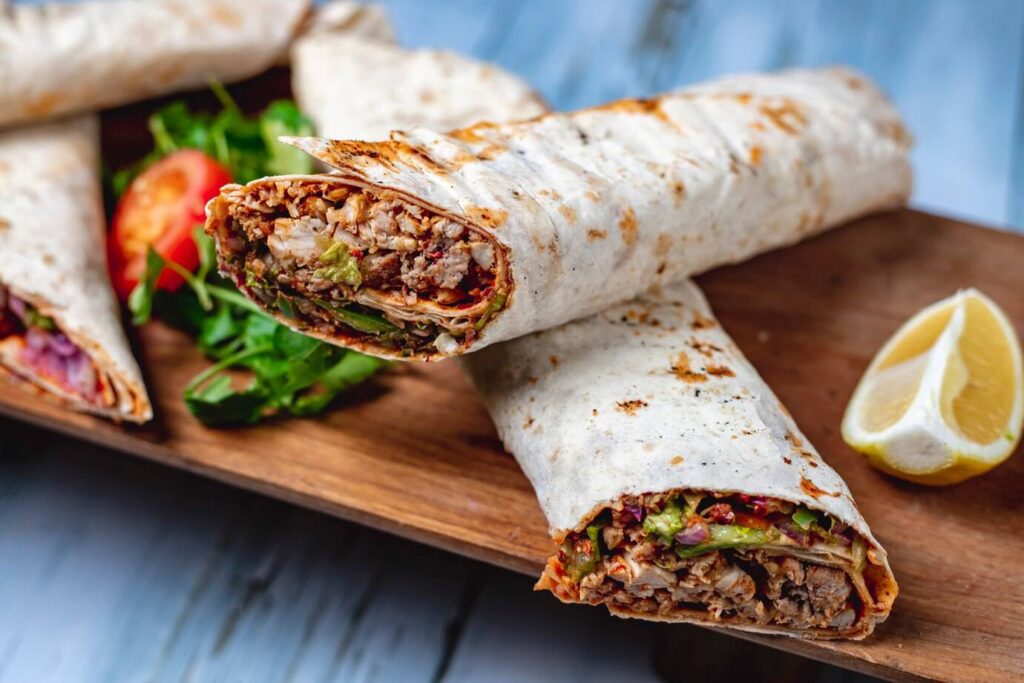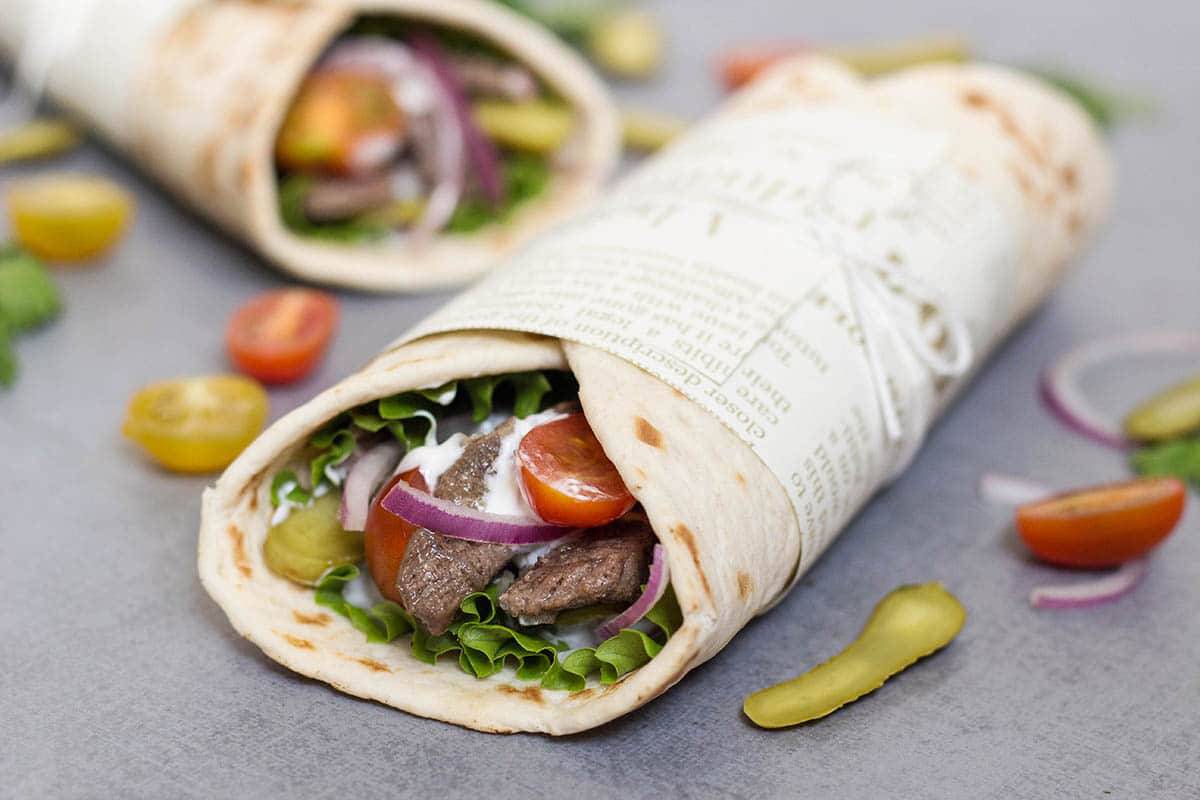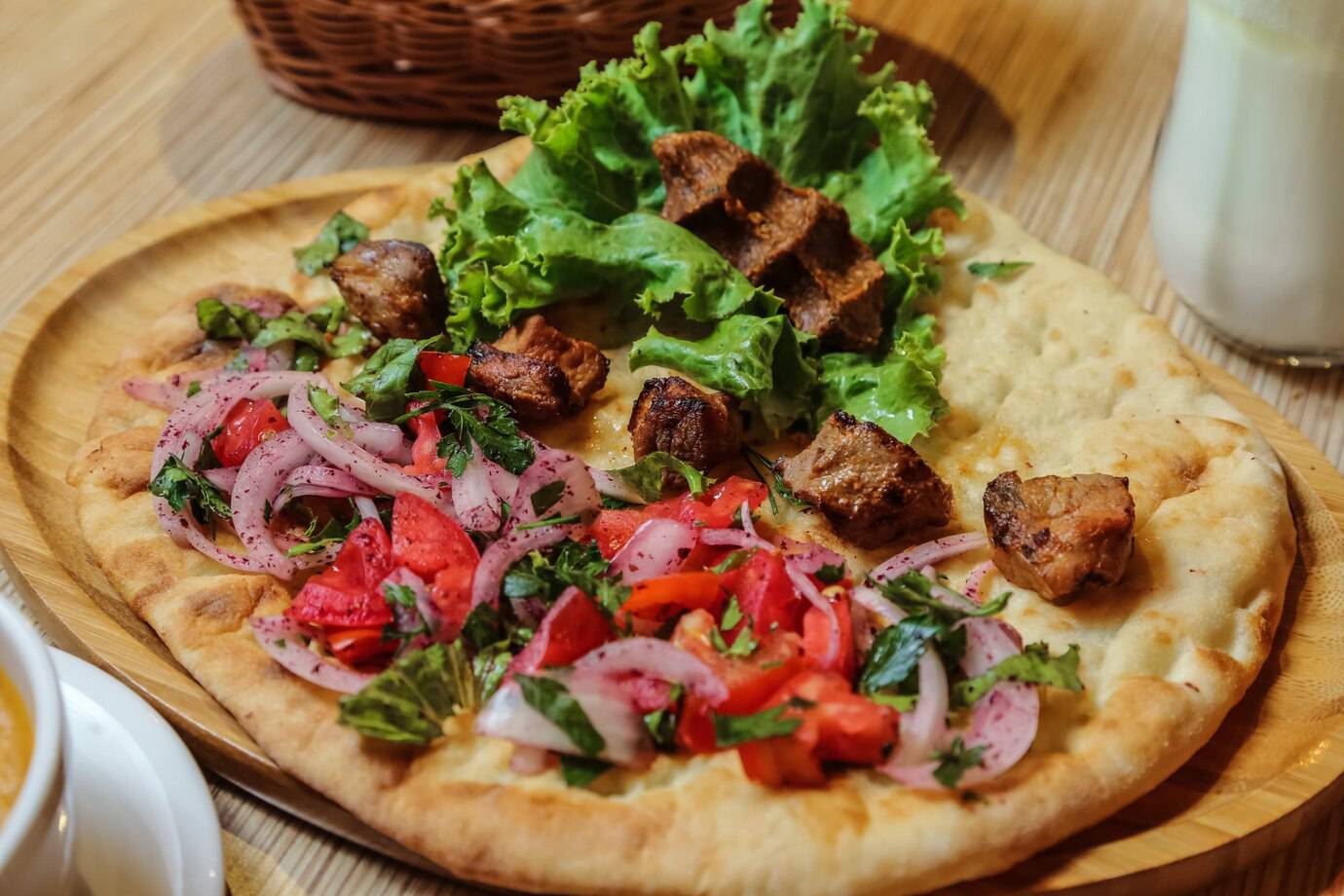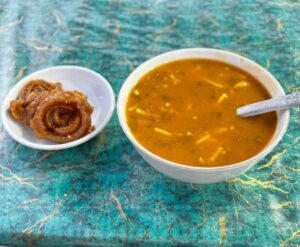The Food & Recipes Blog

Shawarma Showdown: Comparing Regional Flavours
Few street foods have sparked as much universal love as shawarma. This beloved dish—thinly sliced, marinated meat wrapped in warm flatbread—has transcended its Middle Eastern roots to become a global sensation. Whether wrapped in pita on a bustling Beirut street or served with garlic sauce and fries in a London food truck, shawarma flavours vary remarkably by region.
But what makes one shawarma different from another? Is it the spice blend, the meat, the garnish—or a mix of all three? In this blog, we’ll unwrap the story of Middle Eastern meat wraps, explore the regional interpretations of this street food favourite, and help you discover which shawarma flavour reigns supreme in your book.
Let’s begin the flavour tour.
The Roots of Shawarma: A Culinary Legacy
Originating in the Levant region, shawarma has ancient roots tied to the Ottoman Empire. Traditionally cooked on a vertical rotisserie, the meat—commonly lamb, beef, chicken, or turkey—is marinated in a blend of spices before being slowly grilled and thinly sliced.
Essential Shawarma Components:
- Meat: Lamb and chicken are staples, but beef and turkey are popular too.
- Spices: Cumin, coriander, allspice, paprika, and turmeric are frequently used.
- Bread: Usually pita or laffa, though wraps vary by region.
- Toppings: Garlic sauce, tahini, pickles, onions, tomatoes, and chips (yes, fries!).
This base provides the canvas for diverse regional interpretations, each adding a unique twist to the global street food icon.
Middle Eastern Shawarma: The Gold Standard
Lebanon and Syria

Lebanese shawarma is often regarded as the most traditional version. It’s characterised by:
- Tangy garlic sauce (toum)
- Pickled turnips and cucumbers
- Fresh parsley and onions
- Chicken is the star, although lamb is also popular
Syrian shawarma, while similar, tends to be more generously seasoned. You’ll often find:
- Cinnamon and nutmeg were added to the spice mix
- A more robust use of vinegar and yoghurt in the marinade
- Occasionally served with chips rolled directly into the wrap
Both are typically wrapped in thin saj bread or pita and grilled lightly before serving.
Israel
Israeli shawarma features:
- A wide range of meat options, including turkey and veal
- Toppings like Israeli salad, hummus, tahini, and amba (a mango-based sauce)
- Often wrapped in luffa, a thicker flatbread ideal for holding sauces and juices
This version offers a fresh, flavour-packed bite, reflecting Israel’s diverse cultural influences.
North African Influences: Tunisia and Egypt
Egyptian Shawarma
In Egypt, shawarma has become deeply embedded in urban street food culture. What sets it apart?
- Use of beef or veal marinated in vinegar, cardamom, and pepper
- Served in baladi bread, a whole wheat Egyptian flatbread
- Accompanied by tahini, pickled vegetables, and sometimes fava beans
It’s heartier and often more pepper-forward than its Levantine cousins.
Tunisian Shawarma
Tunisia adds spice—literally. Influenced by harissa (a fiery chilli paste), Tunisian shawarma often features:
- Bold heat levels balanced with yoghurt-based sauces
- Spices like caraway and cumin
- A preference for grilled vegetables inside the wrap
This variation caters to those with a taste for warmth and zest.
Turkish Döner vs. Shawarma: Cousins with Character

Although not shawarma per se, Turkish döner kebab deserves mention. It’s made similarly but offers:
- Bolder use of lamb or beef
- A bread choice of lavash or pide
- Simple toppings like onions, sumac, and tomato slices
Unlike Middle Eastern shawarma, sauces are minimal, allowing the spice-marinated meat to shine independently.
Shawarma in Europe: Adaptation Meets Innovation
Germany
Germany’s multicultural landscape has given rise to the wildly popular Döner Kebap, often mistaken for shawarma but influenced by it. Expect:
- A thicker bread roll or flatbread
- Layers of lettuce, cabbage, onions, and sauces (including spicy chilli or creamy garlic)
- A robust portion size—perfect for hearty appetites
It’s street food that’s affordable, filling, and customisable.
The UK
In cities like London, Manchester, and Birmingham, shawarma stalls thrive, offering blends of Turkish, Lebanese, and Pakistani styles. British street shawarma often features:
- Chicken or lamb, with optional halloumi
- Sauces like mint yoghurt, chilli, or garlic mayo
- Chips either on the side or inside the wrap
This fusion style has become a staple in post-pub culinary culture, reflecting British multiculturalism.
North American Variants: Bold, Hearty, and Diverse
Canada
In cities such as Toronto and Vancouver, shawarma has become an essential late-night ritual. Canadian shawarma typically includes:
- Chicken or beef marinated with a blend of Middle Eastern and South Asian spices
- Served with garlic potatoes, rice, or in wraps
- Generous helpings of garlic sauce, hot sauce, and pickled cabbage
Canadian street shawarma is known for its portion sizes and bold flavours.
The United States
American shawarma leans towards fusion, with Mediterranean and Mexican influences. It’s not uncommon to find:
- Shawarma tacos or shawarma burritos
- Add-ons like sriracha, cheddar cheese, or even avocado
- Regional variations like Shawarma bowls with quinoa or couscous
These interpretations prioritise convenience and innovation, catering to local palates.
Vegetarian and Vegan Shawarma: A Growing Trend
The shawarma world isn’t limited to meat-eaters. Across the globe, vegetarian and vegan variants are gaining traction. Examples include:
- Mushroom shawarma with smoky paprika and cumin
- Jackfruit wraps mimicking the texture of pulled meat
- Seitan or tofu marinated in traditional spice blends
These options often use traditional breads and sauces, ensuring an authentic flavour experience without the meat.
The Street Shawarma Experience
Street vendors have played a critical role in the shawarma’s popularity. Whether in Beirut, Berlin, or Birmingham, there’s something special about ordering shawarma wrapped hot and fast by a skilled hand.
What makes street shawarma unique?
- Speed and freshness of preparation
- Charred, crispy edges of meat straight off the rotisserie
- Personalisation with toppings and sauces
In many ways, street shawarma captures the soul of its region—a bite-sized story of its people, spices, and traditions.
Which Shawarma Wins?
From Lebanon’s garlic-heavy wraps to Tunisia’s spicy notes and the UK and North America’s fusion feasts, shawarma flavours tell a story of global adaptation. Each region adds its signature, making it impossible to crown a single winner.
Whether you’re a purist who prefers Middle Eastern meat wraps in their traditional form or a foodie chasing bold, street shawarma innovations, one thing is sure: shawarma has earned its place on the world stage.
Next time you bite, consider the spices, sauces, and stories folded into that wrap. You’re not just eating a meal—you’re tasting history.
Ready to Explore More?
Love shawarma as much as we do? Subscribe to our blog for deep dives into world cuisines, authentic recipes, and local foodie tips. Got a favourite shawarma spot or flavour? Share your showdown pick in the comments below!









